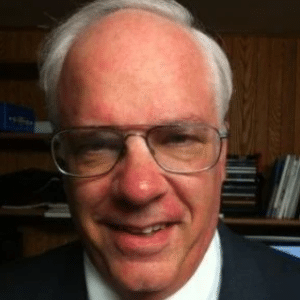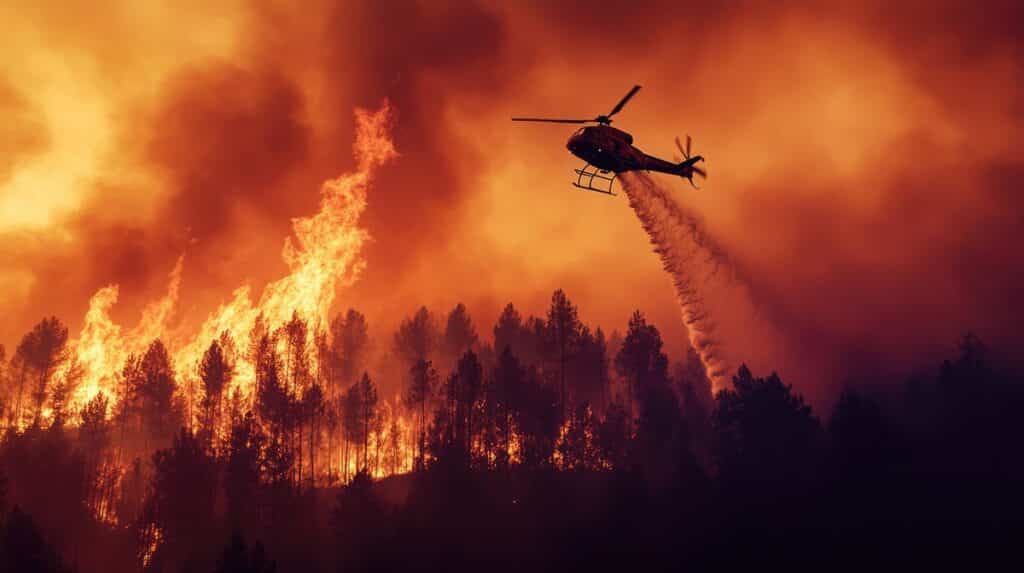This article originally appeared in the February 2025 edition of MortgagePoint magazine, online now.
California’s wildfires, which were still burning as this issue went to press at the end of January, are expected to have significant impacts on government housing-related programs, the insurance market, housing affordability, and delinquencies, with many of the effects reaching far beyond the regions of the fires themselves.
Before the Hughes Fire erupted in northern Los Angeles during the third week of January, some estimates already put the losses as high as 1.6% of the Los Angeles housing market, with more than 24,000 housing units destroyed and more expected to be lost.
Though there has been some government response to the disaster already, some government agencies are remaining mum, wanting time to assess the damage and consider the response.
Many mortgage industry experts are also reserving commentary on the effects of the disaster until the full extent is known.
Federal, State Programs
A week before he left office, President Joe Biden made federal funding available for the next six months to cover temporary housing, emergency assistance to individuals, and costs related to immediate public safety threats, such as the cleanup of debris and hazardous materials.
However, in a late January interview with Fox News, President Donald Trump threatened to withhold federal disaster aid unless California leaders change the state’s water management rules.
In late January, California Gov. Gavin Newsom signed legislation providing over $2.5 billion in disaster relief, with the funding designated to help bolster ongoing emergency response efforts, saying that the funding was the first step in the state’s response to the recovery efforts.
The funding includes:
- Emergency protective measures, evacuations, sheltering for survivors, debris removal and cleanup, post-fire hazard assessments (such as flash flooding and debris flows), traffic control, and other necessary emergency response activities.
- $4 million to help expedite rebuilding. The California Department of Housing and Community Development will allocate this funding to impacted local governments to provide additional planning review and building inspection resources for the purpose of expediting building approvals during the recovery period.
- $1 million to rebuild fire-damaged school facilities. The funding will provide technical assistance to impacted local educational agencies (Los Angeles Unified School District, Pasadena Unified School District, impacted charter schools).
The funding will make only a small dent in the devastation caused by the wildfires.
To aid those impacted by the fires, California Insurance Commissioner Ricardo Lara in late January ordered California insurance companies to make advance payments on claims.
“We advise wildfire-impacted households to request these advances, continue tallying up the full extent of their losses and how much it will cost to replace their homes and possessions, and stay focused on collecting all available policy benefits,” said consumer advocate Amy Bach, United Policyholders Executive Director, in a prepared statement.
Lara also put a moratorium on any non-renewals or cancelations for those in wildfire-affected areas.
Though First American Financial Corporation reserved commentary on the wildfires until more is known, the company did discuss it in a recent blog post.
The recent Los Angeles wildfires are on pace to be the most destructive in California’s history, the company noted, explaining that it was too early to fully assess the scale of the damage, as the emergency was not yet over. But one clear result even then was a housing “supply shock,” or a rapid reduction in housing supply. First American’s post noted that it was difficult to quantify the extent of the supply shock, since most reports available at the time only counted “structures” destroyed—which doesn’t easily translate into “housing units,” the typical measure of supply in the residential market.
“Rebuilding in Los Angeles will be challenging,” wrote Xander Snyder, First American Senior Commercial Real Estate Economist. “The city is known for its difficult building environment. Although there have been some moves to relax certain regulations to ease redevelopment, it remains to be seen whether these policies will have their intended effect. Long redevelopment times and high redevelopment costs means there will be a significant period of time where all the displaced households will be seeking housing with less housing suddenly available.
“Additionally, approximately 72% of all residential land in Los Angeles is zoned exclusively for single-family development, which could make it difficult to quickly build housing stock densely enough to accommodate demand.” Snyder added: “This will increase housing costs—both prices and rents—across the city. However, if many people who have lost their homes choose to relocate to other cities, the supply shock would be less severe, and the impact on rents and house prices would be more limited.”
Beyond the programs and initiatives already announced, further government initiatives are a matter of speculation, according to various government agencies and mortgage industry experts.
“It’s too early to assess the full impact of the devastating wildfires in California,” NAIC, which was not granting interviews at press time, said in a prepared statement. “We would urge affected property owners to contact their insurance companies as soon as possible to see what their policy covers and then file claims. The California Department of Insurance—like all state Departments of Insurance—is available to assist consumers with their claims and insurance questions.”
The prepared statement added: “Insurance regulators work on behalf of their states to ensure stable, competitive marketplaces and financially solvent carriers. They make sure that insurance companies have the financial resources to make good on their promises to pay claims. They work to ensure that consumers have choices when it comes to buying insurance to protect their family and their property.
“Nobody knows what the government is going to do,” said Shawn Yerkes, Group President, Financial Services, for Fay Financial. “Obviously, co-insurance is going to be an issue moving forward. Every time government has stepped in, they have issues. You saw that in Florida, where they created a subsidized agency [Citizens Property Insurance Corp.], and now they’re trying to sell off the assets.”
Citizens Property Insurance Corporation said that its policy count has dipped below 1 million for the first time in more than two years as the Florida property insurance market continues to improve.
In early December, Citizens announced its policy count had dropped to 987,650, which the organization credited to its the Citizens Depopulation Program. Since January 2024, the program has transferred more than 428,000 Citizens policies to private insurance companies approved by the Office of Insurance Regulation.
Citizens is also seeing a reduction in the flow of new policies into Citizens, which it says is due to renewed interest by new and existing private companies to enter or expand in the Florida market.
California’s FAIR Plan is a similar concept, providing basic fire insurance coverage for high-risk properties when traditional insurance companies will not. In mid-January, the FAIR Plan said that initial estimates indicate that about 22% of the structures in the CAL FIRE incident map for the Pacific Palisades Fire are covered by the FAIR Plan, with a total potential exposure of over $4 billion for the Pacific Palisades Fire, and a total potential exposure of over $775 million for the Eaton Fire, according to the CAL FIRE incident maps. However, there had yet to be any estimates for the Hughes Fire or the other smaller California fires that emerged.
Though the California Fair Plan Association points out that exposure doesn’t mean losses, a Los Angeles Times article questioned if the association could stay solvent without an additional cash infusion.
The California fires, as well as the hurricanes throughout last year, will lead to higher property insurance costs across the country, mortgage industry experts agree.
“In the last couple years, it’s been extremely difficult for anybody in California to get insurance, and the cost has doubled and or tripled in some areas,” said Gretchan Francis, InsureMAC Managing Director.
Though more expensive than traditional insurance, and only intended to protect the lender, the sharp increases in traditional insurance means that lender-placed insurance currently “doesn’t look so bad,” according to Francis.
Historically, 1-2% of homeowners have lender-placed insurance. Though Lara’s one-year moratorium on cancellations and non-renewals helps homeowners maintain insurance now, it will likely lead to more carriers leaving the state and even sharper insurance increases in the future, Francis claimed.
Furthermore, those increases won’t be limited to the areas impacted by the wildfires, which are a crisis for the carriers due to the rush of claims, as well as for the property owners, Francis says.
“Insurers are going to spread out their risk,” Yerkes said. “Unfortunately, that means even if you live in a low-risk state, which there are fewer and fewer of these days, premiums will increase a lot. There are fewer and fewer safe havens, and those states are going to have to absorb some of the cost of insuring those in other locations.”
Yerkes expects increases to be as much as 30%, which will impact home affordability, as well as delinquencies. Francis expects insurers to raise deductibles to help mitigate the increase in premiums.
“The California insurers don’t know what to do yet because this has hit in such a short period of time,” Yerkes added. Even before the wildfires hit, some major insurers had stopped providing coverage in Los Angeles. Rebuilding in Los Angeles will be challenging due to the city’s difficult building environment and zoning regulations, so the loss of supply will likely increase housing costs across the city, Snyder noted.
Impact on Home Affordability
While rising material and labor costs and any remediation of fire retardants and other hazardous materials will make rebuilding structures more costly than the homes they replace, Daren Blomquist, VP of Market Economics for Auction.com, said he expects there to be no shortage of interest in rebuilding in the Pacific Palisades and surrounding areas that were completely destroyed by the fires.
However, the rising costs of homes and insurance will have a negative impact on home affordability, mortgage industry experts agree.
Many homes in the areas that have been hit by wildfires or hurricanes are on some of the most desirable land in the country and were owned by the very wealthy, who can afford higher insurance rates, Yerkes said. But that won’t be the case for everyone impacted by this or future disasters.
“I started in mortgage lending 25 years ago, and insurance was an after-thought. It didn’t affect your debt-to-income ratio or your qualification. But now it’s a completely different animal.”
The cost of taxes and insurance are having a major impact on home affordability, Francis agreed. “The only good thing is that, during COVID, a lot of people refinanced at very low interest rates. So, we have a large number of borrowers that are sitting on very, very low interest rates. They’re highly incented to stay where they are and continue paying that very, very low interest rate on their mortgage.”
More Delinquencies?
However, some homeowners, including some who still had outstanding mortgages, won’t be returning, Blomquist acknowledged.
“I think the uptick in delinquencies that we’re already seeing will likely be continuing due to issues like this,” Blomquist said, referring not only to the wildfires but also other disasters. “The uptick in delinquencies will eventually trickle down to more foreclosure options that we’ll see for our company. But COVID pushed the mortgage servicing industry to get very good at dealing with disasters.”
Blomquist explained that he expects “we will see not only some government programs step in, but also the mortgage servicing industry help by giving people more time when they’ve been hit with a natural disaster, [helping provide] plans to start paying their mortgage again.”
Both the government and industry response remain in the state of flux until the current wildfires burn themselves out, and likely for some time thereafter.
Jane Mason, CEO of Clarifire, urged lenders and others in the mortgage industry to communicate often and clearly with borrowers.
“I live in Florida and experienced two direct hits with the hurricanes,” Mason said. “One of the commonalities between the hurricanes and the wildfires are the communications with the borrowers. We advise our customers, which are large servicers and banks, to be proactive.”
This sort of proactivity can include informing customers if they automatically qualify for forbearances or how to apply for different programs. “What’s happening is the lack of coordination between the servicers, the mortgages, the mortgage companies, the insurers, and the FEMA organizations,” Mason said. “Servicers, banks, insurance companies need not only collaboration but robust technology to manage and respond.”








